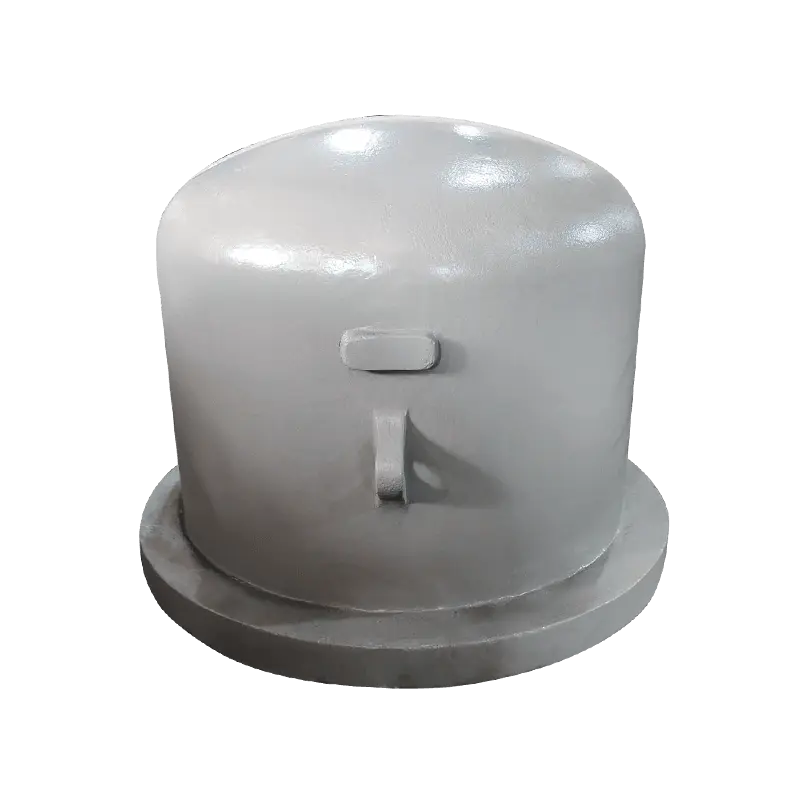Automotive Industry: In automotive manufacturing, ductile iron is crucial for producing components like engine blocks, crankshafts, and suspension parts. The material’s high tensile strength and ductility allow it to absorb energy and withstand the intense mechanical stresses encountered during operation. For instance, engine blocks made from ductile iron can handle higher combustion pressures, contributing to improved engine performance and efficiency. Its fatigue resistance enhances the lifespan of components subjected to cyclic loading, ultimately leading to more reliable vehicles.
Heavy Machinery: The construction and mining industries rely heavily on ductile iron for various components, such as gears, housings, and brackets. The material’s superior wear resistance is vital for machinery operating in abrasive environments. Ductile iron components can endure the high torque and impact forces typical in heavy machinery applications, ensuring efficient operation and reducing the frequency of repairs or replacements. Its ability to be cast into complex shapes allows for intricate designs that optimize performance while minimizing weight.
Pipes and Fittings: Ductile iron pipes have become a standard choice in water supply and sewage systems due to their exceptional strength and corrosion resistance. Unlike traditional cast iron, ductile iron pipes can withstand higher internal pressures, making them suitable for a wider range of applications, including high-pressure water distribution and wastewater management. The material’s ductility also helps it resist cracking, providing a reliable solution for long-term infrastructure projects. The ease of installation and maintenance of ductile iron fittings contributes to lower overall project costs and extended service life.
Construction: In the construction sector, ductile iron is utilized for various applications, including structural components, manhole covers, and drainage systems. Its impressive load-bearing capacity ensures that structures remain stable under heavy loads, while its resistance to environmental factors—such as corrosion from moisture and chemicals—enhances durability. Ductile iron’s aesthetic versatility allows it to be used in architectural applications as well, providing both functionality and visual appeal. Its recyclability aligns with sustainability goals in modern construction practices.
Agriculture: The agricultural sector benefits significantly from ductile iron in the manufacturing of machinery such as tractors, tillers, and plows. The material’s excellent strength-to-weight ratio enables the production of lighter equipment without compromising performance. This lightweight nature allows for better fuel efficiency and maneuverability in the field, which is crucial for modern agricultural practices. Additionally, ductile iron’s ability to withstand harsh outdoor conditions, such as moisture and soil abrasion, contributes to the longevity of agricultural machinery, reducing downtime and maintenance costs.
Railways: In the railway industry, ductile iron is used in the production of track components, fittings, and various structural elements. The material’s resilience to dynamic loads and ability to absorb shock make it ideal for rail applications, where safety and reliability are paramount. Ductile iron components can withstand the continuous impact of heavy trains while maintaining their structural integrity over time. The ease of casting complex shapes allows for precise manufacturing of components that meet strict engineering standards, enhancing overall railway performance and safety.
Wind Turbines: As the demand for renewable energy increases, ductile iron components are increasingly being utilized in wind turbines. Critical components such as gearboxes, housings, and structural supports benefit from the high strength and fatigue resistance of ductile iron, which are essential for enduring the mechanical stresses imposed by wind forces. The material's ability to withstand harsh environmental conditions ensures the longevity and reliability of wind turbines, contributing to the sustainable energy landscape. Its weight-to-strength ratio facilitates efficient design and construction, optimizing turbine performance.















